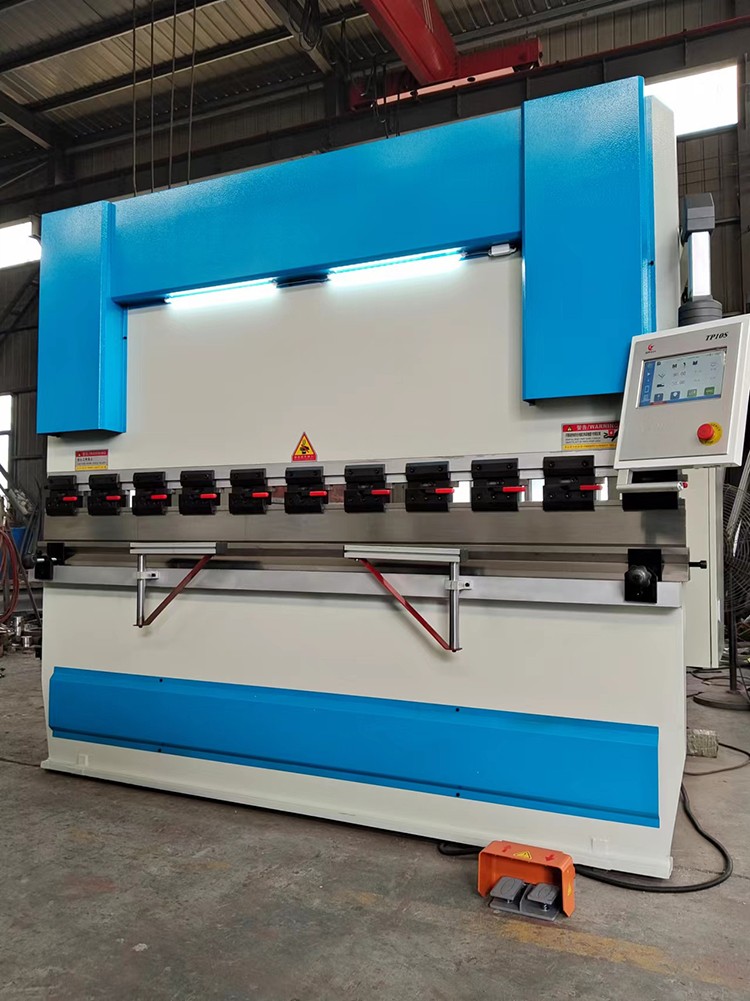

After more than 10 years of industry experience, we, as a professional bending machine manufacturer, would like to explain the mold heat treatment process and quality improvement of bending machines:

Bending machine molds are key components in sheet metal processing, and their performance directly affects bending accuracy, mold life, and production efficiency. Heat treatment is a core process in mold manufacturing, regulating the internal structure of the material to give the mold the required hardness, toughness, and wear resistance. A reasonable heat treatment process can significantly improve mold quality and reduce production costs.
1. Material Properties of Bending Machine Dies
Bending machine dies are typically made from alloy tool steel, with common materials including Cr12MoV, 42CrMo, and SKD11. These materials have high carbon content and alloy element ratios, and can achieve an ideal microstructure through heat treatment. Material selection must consider the hardness of the processed sheet metal, production volume, and cost factors. Cr12MoV is suitable for large-scale production, with its high chromium content providing excellent wear resistance; 42CrMo, on the other hand, balances toughness and strength, making it suitable for moderate load conditions.
2. Heat Treatment Process Flow
The complete heat treatment process consists of four key stages: pre-treatment, quenching, tempering, and deep cryogenic treatment. The pre-treatment stage employs spheroidizing annealing, where the steel is heated to 750–800°C and then slowly cooled to ensure uniform distribution of carbides, laying the foundation for subsequent processing. During the quenching stage, the austenitizing temperature must be precisely controlled. For Cr12MoV steel, the heating temperature is typically set to 980–1020°C, with the holding time calculated based on the mold thickness, generally ranging from 1.2–1.5 minutes per millimeter. The cooling medium is predominantly graded oil quenching, which balances cooling speed and deformation control.
The tempering process is key to ensuring balanced performance. After quenching, the mold is tempered at 180-220°C for 2-3 times, each time for 2-4 hours. This process promotes the transformation of residual austenite, eliminates internal stress, and maintains sufficient hardness. For high-precision molds, deep cryogenic treatment below -70°C can be added to further stabilize the structure and improve dimensional stability by approximately 15%.
3. Key points of process control
Temperature uniformity is the primary guarantee of heat treatment quality. Controlled atmosphere furnaces or vacuum furnaces can effectively prevent surface decarburization, and furnace temperature deviations must be controlled within ±5°C. The loading method must ensure uniform spacing between molds to avoid heat radiation obstruction. During the cooling stage, the medium temperature must be monitored, and the quenching oil should be maintained at 40-60°C. Excessively high temperatures will reduce the cooling speed, while excessively low temperatures will increase the risk of cracking.
Hardness testing is performed using a Rockwell hardness tester (HRC), with a standard value of 58-62 HRC. Excessive pursuit of high hardness can lead to a decrease in toughness. In actual production, adjustments should be made based on the thickness of the bending material. When processing sheets thinner than 2 mm, the hardness can be appropriately reduced to 56-58 HRC to enhance impact resistance.
4. Common defects and improvement measures
Quenching cracks are the most serious form of failure, often caused by excessive heating rates or uneven cooling. Improvement measures include: adding a preheating stage at 500–600°C to reduce temperature gradients; optimizing the transition radii at mold edges to minimize stress concentration. Insufficient hardness is often caused by an overly low austenitizing temperature or insufficient holding time. The cause can be traced by conducting a metallographic analysis to confirm the quantity of undissolved carbides.
Early wear during use is often related to surface treatment processes. Adding TD treatment (vanadium carbide coating) or PVD coating after heat treatment can increase surface hardness to over 3000 HV and improve wear resistance by 3-5 times. For large molds, local strengthening methods such as induction hardening can be used to form a gradient hardness distribution in critical stress areas.
5. Comprehensive strategies for quality improvement
Establishing a comprehensive temperature recording system is the foundation of quality control. It is recommended to use temperature control instruments with data storage functions to save temperature curves for at least three heating zones. Test blocks should be retained for each batch of molds for destructive testing and process traceability. Heat treatment equipment should be calibrated regularly, with a focus on checking the measurement accuracy of thermocouples and the sealing of furnace chambers.
Personnel training is equally important. Operators need to understand the relationship between process parameters and material properties. For example, they should recognize that increasing the tempering temperature by 10°C will reduce hardness by approximately 1 HRC, but impact toughness will increase by 8%–10%, enabling them to make reasonable adjustments in actual production.
The heat treatment of bending machine dies is a combination of materials science and process control. With the application of intelligent monitoring technology, it is now possible to regulate heating power and cooling speed in real time. The future direction of development lies in establishing a digital model of heat treatment parameters and die service performance, further optimizing the process window through big data analysis, and achieving dual improvements in quality and efficiency.
If you are interested in bending machines, please contact us.
 Address:Room 1202, Detaitang Building, No. 118 Huaguang Road, Zhangdian District, Zibo, Shandong
Address:Room 1202, Detaitang Building, No. 118 Huaguang Road, Zhangdian District, Zibo, Shandong WhatsApp:+8615653328535
WhatsApp:+8615653328535 Wechat: +8615965331535
Wechat: +8615965331535  E-mail:zs@sdsmachinery.com
E-mail:zs@sdsmachinery.com